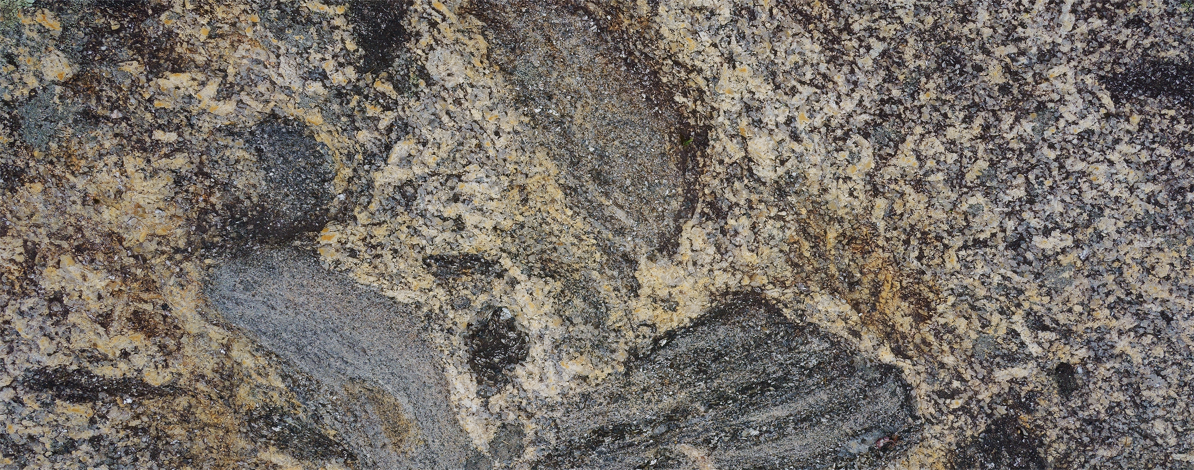Granitic rocks
The rock cycle represents the main interactions between several processes and materials in the Earth system (Fig. 4.1), namely the origin of and the relation between igneous, sedimentary and metamorphic rocks. This model shows that any type of rock can be transformed into another due to geological processes.
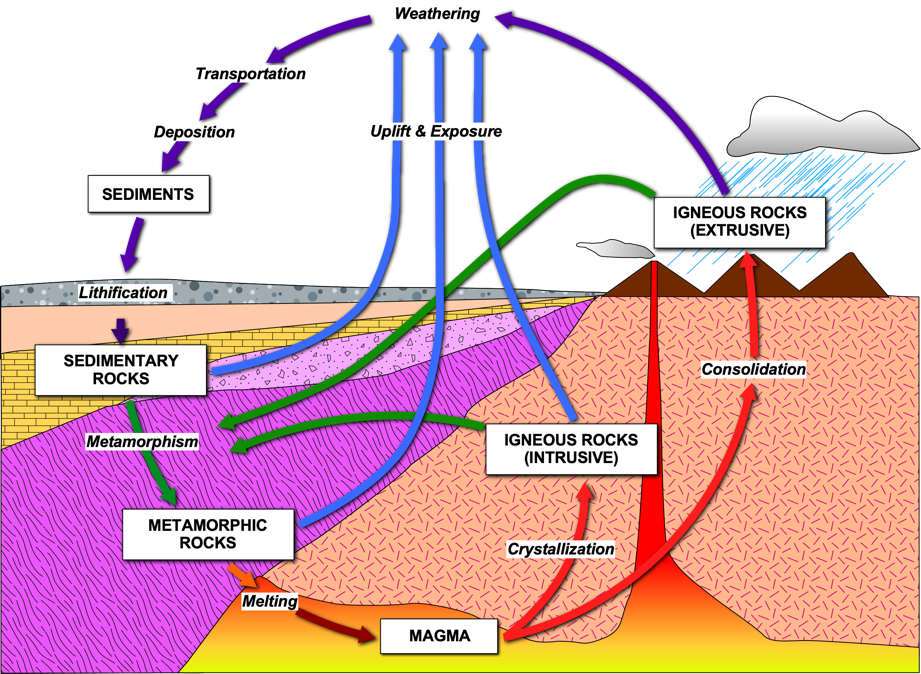
Figure 4.1. Scheme representing the rock cycle with emphasis being given to the main materials and geological processes.
Granitic rocks have an igneous (or magmatic) origin and are the result of slow cooling and crystallization of magma some kilometres deep. Rocks that form in this way are called intrusive.
There are different types of magma, and therefore the chemical and mineralogical composition of granitic rocks may also vary a lot. The most common minerals in granitic rocks are quartz and feldspar (orthoclase, plagioclase), which are always present. Minerals like mica (biotite and moscovite), amphibole, garnet, among others, may be part of granites or not.
A granite is petrologically defined as a rock where quartz can vary between 20 and 60% and plagioclase between 10 and 60% of the total amount of quartz+alcaline feldspar+plagioclase. Granitic rocks are usually hard, homogeneous and crystalline, and with a reduced primary porosity. The rate of cooling is also responsible for originating different rocks. Slow cooling allows minerals to grow thus giving rise to rocks that possesse crystals several centimeters long. As a consequence, granitic rocks may present different types of minerals and a variety of textures (texture is related to the size of the minerals) (Fig. 4.2).
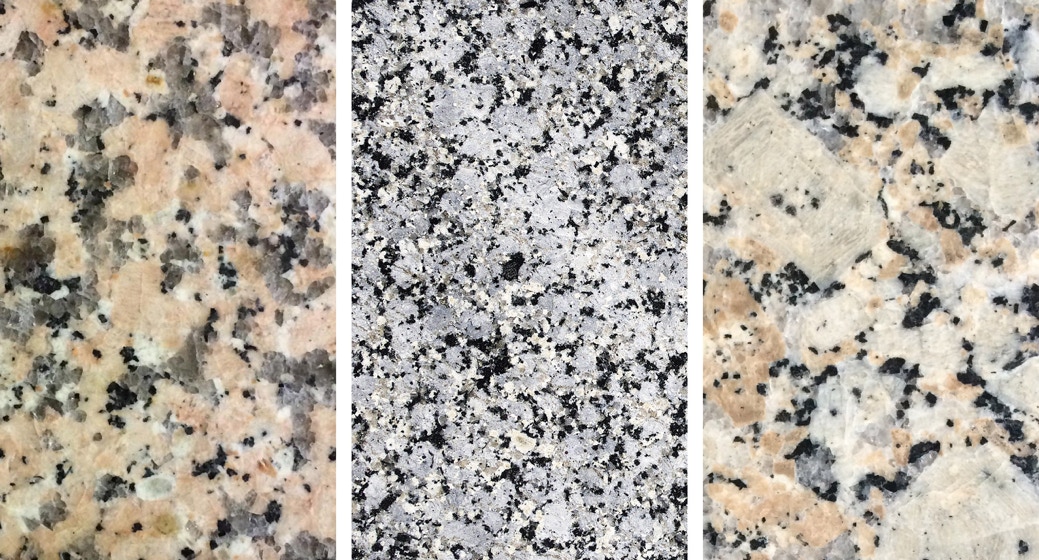
Figure 4.2. Different textures of granitic rocks.
In the LNM “Granite Plateau of Chãs de Santa Luzia”, two main types of granite can be found. They were emplaced during the Variscan orogeny, which had its maximum about 300 million years ago (Fig. 4.3). In the northern part of the LNM, occurs a fine to medium grained porphyroid granite that was emplaced during the second phase of the Variscan orogeny: the Bouça de Frades granite. In the southern part of the LNM, occurs the Afife granite, which is medium to coarse grained, and was emplaced during the third phase of the same orogeny. In the south west, there is a variation of the Afife granite with a fine to medium grained two micas facies. All the granite facies have quartz, K-feldspar, biotite, apatite, zircon, and sillimanite. Tourmaline and garnet occur exclusively in the facies in the south west part of the LNM.
The distribution of granites in the field reflects the age of their emplacement: the most recent at the base, corresponding to the third phase of the Variscan orogeny, and above the ancient ones, corresponding to the second phase of the orogeny. The granites were emplaced in a regional antiform named Viana do Castelo – Caminha (AVCC) Antiform (Pamplona e Ribeiro, 2013, Evolução geodinâmica da região de Viana do Castelo (Zona Centro-Ibérica, NW de Portugal), In Geologia de Portugal, vol. 1, Escolar Editora, 149-203).
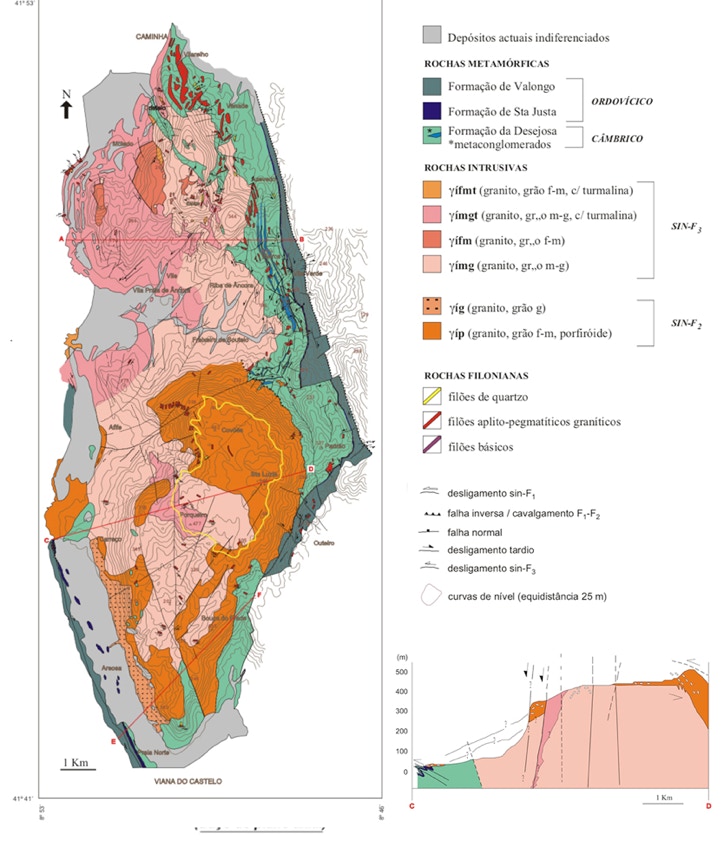
Figure 4.3. Geological map of the northern coast of Viana do Castelo. The boundaries of the Local Natural Monument “Granite Plateau of Chãs de Santa Luzia” are in yellow. (Adapted from Pamplona, 2001, Tectónica do antiforma de Viana do Castelo-Caminha (ZCI): regime de deformação e instalação de granitóides, tese de doutoramento, Universidade do Minho).
The most outer layer of planet Earth (lithosphere) is formed by moving tectonic plates giving rise to three types of boundaries: convergent boundaries, when plates move into one another; divergent boundaries, when they move apart, and transform boundaries, when moving sideways in relation to each other.
The creation and destruction of tectonic plates are processes that take place during millions of years since the beginning of Earth’s history. Plates are usually created in the middle of continents originating oceans – where sediments resulting from the erosion of continents form sedimentary rocks – and after their closure the collision of continents gives rise to mountain ranges (orogeny). Each of these sequences corresponds to a geological cycle also named Wilson Cycle.
Several geological cycles – with about 500 million years each since the initial opening to the orogenic phase – took place in the past, as can be verified in rock outcrops that exist today in the surface of the Earth. Most of rocks that occur in Portugal are associated with the last two orogenic cycles, Variscan and Alpine.
The geological backgroud that was structured during the Variscan cycle is called Iberian Massif and is the main geological backbone of the Iberian Peninsula. At the borders of the Iberian Massif (Lusitanian and Algarvian basins) or in its inside depressions (Douro, Tejo, Sado, Ebro and Guadalquivir basins) sediments formed rocks during the Alpine cycle (opening of the Atlantic Ocean), which is still developing with colliding phases that give rise to today most significant mountain ranges.
The Iberian Massif corresponds to (sedimentary) rocks that were formed during the oceanic phase of the orogenic cycle and after transformed into metamorphic rocks. In this phase, several generations of granite plutons were placed in depth and today they outcrop in large areas of Portugal.
Granites that occur in this LNM and surrounding regions must be understood in the context of the Variscan orogeny. Their current emplacement at the surface reveals the long erosion endured by rocks of the Iberian Massif during the last 300 million years. This process was reinforced by the regional tectonic uplift that took place during the Alpine orogeny (Fig. 4.4).
300 million years ago
Granites in Santa Luzia Plateau and surroundings formed about 300 million years ago when tectonic plates collided.
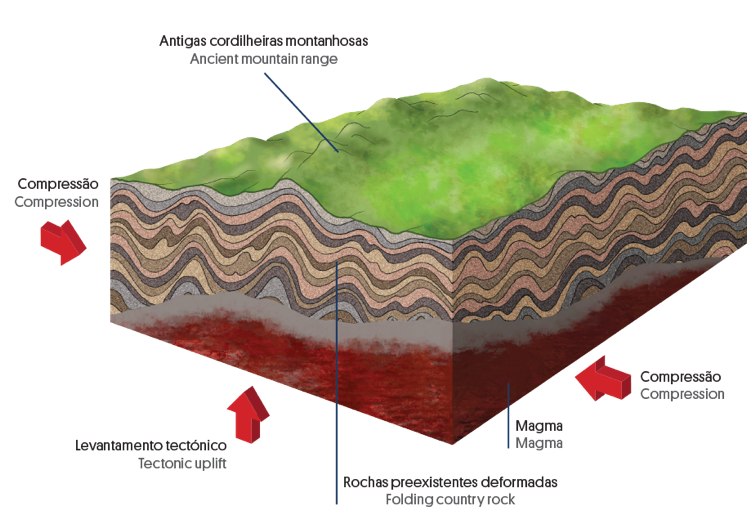
Today
Since then, rocks that were on top of granites were eroded and these slowly became visible at the surface.
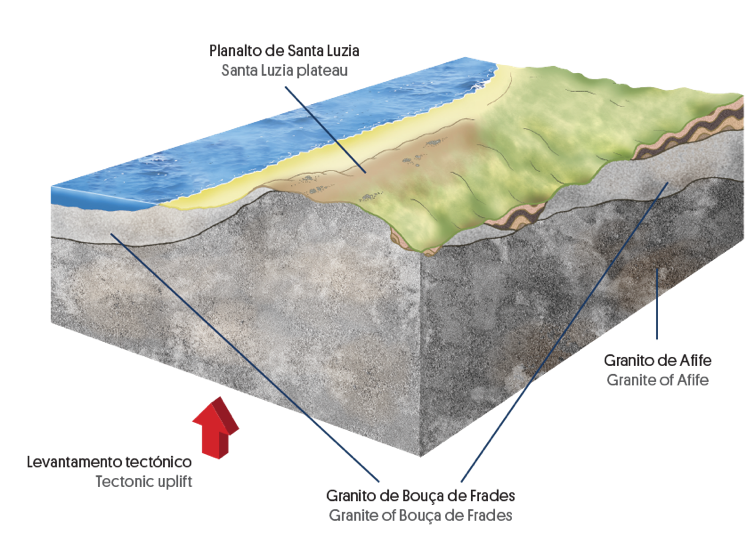
Figure 4.4. Scheme of the model that explains the placement of granitic plutons during Variscan orogeny and their current disposition.
The Bouça de Frades granite has some xenoliths with micas and other minerals of metasedimentary origin. This circumstance reveals that these rocks were emplaced at the top of the granitic pluton and near the surrounding metasedimentary rocks. Near the top of Santa Luzia mountain there are remains of metasedimentary structures (Desejosa formation) included in granite outcrops. In the Afife granite, xenoliths of the fine grained Bouça de Frades granite can be found, which represents a latter emplacement of the former (Fig. 4.5).
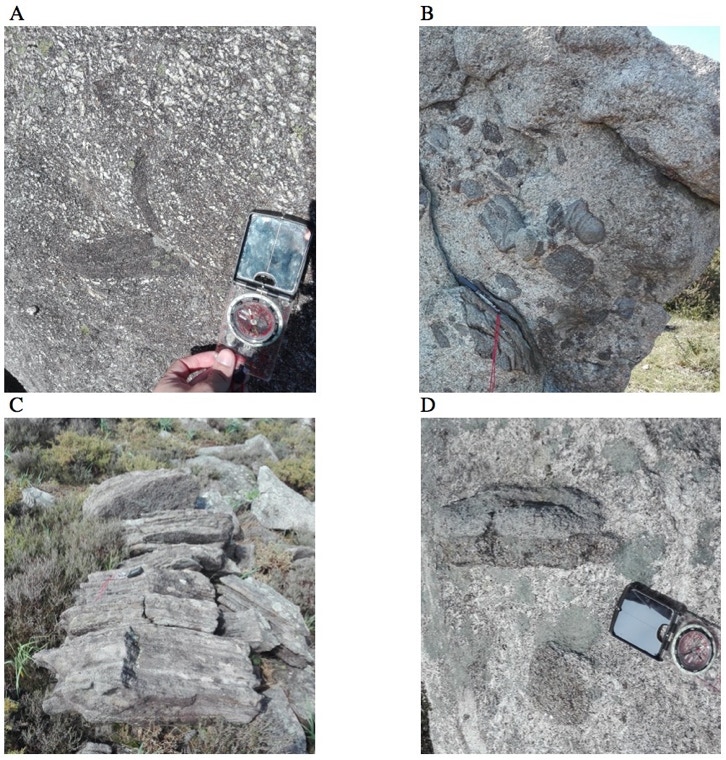
Figure 4.5. Xenoliths with mica (biotite) (A), metasedimentary xenoliths (B), and outcrop with metasedimentary structures (C) in the porphyroid facies of Bouça de Frades granite. Afife granite xenoliths in Bouça de Frades granite (D) in the southeast area of this LNM.
It is also in the Afife granite that pegmatite veins can be found, some of them about 1 meter thick with minerals such as garnet, tourmaline and beryl (Fig. 4.6).

Figure 4.6. Pegmatitic veins with tourmaline in the Afife granite in the southeast area of the LNM.
4.2. Granitic landforms
The area of the LNM overlaps with the flat tops of Santa Luzia mountains (between 450 and 550 meters high) and other small plateaus located in the central areas of the Iberian Peninsula.
The spatial disposition and distribution of plateaus has always been addressed when explaining the evolution of landforms. During the first stages of the Alpine cycle, the Iberian Massif was subjected to a strong erosional process. As a result, a large plane surface near sea level was established 80 million years ago. Since then, the orogenic phases of the Alpine cycle rose up that surface, known as the Iberian Meseta, until its present altitude (Fig. 4.7). These tectonic movements had different intensities so plateaus rose to different altitudes; all of them are testimonies of a planation process during the Mesozoic. The plateaus will disappear with time due to erosion and fluvial carving.
The top plateaus of Santa Luzia mountains are thus the expression of a Mesozoic planation process and subsequent tectonic uprising during the last 80 million years.


Santa Luzia
Figure 4.7. Santa Luzia plateau testimonies the staggering of the primal surface of the Iberian Meseta, which is most represented in central areas of the Iberian Peninsula.
Weathering
Weathering is a series of physical and chemical processes that rocks endure at the surface because of water, the atmosphere, and temperature variations. Conditions of temperature and pressure at the surface are very different from the in-depth environment where rocks are formed.
The mineralogical composition of rocks influences chemical weathering, which is stronger when minerals are instable. Minerals that have crystallized at higher temperature and pression are less stable at the surface.
In the case of granite rocks, quartz is the most stable mineral and calcium rich plagioclase, amphibole and biotite are the less resistant to weathering. Clay minerals such as kaolinite are the result of chemical weathering of plagioclase and alkaline feldspar. Weathering reduces intergranular resistance of minerals and favours rock decay. Textural characteristics of rocks, such as the size of crystals, also condition landforms.
The sub-orthogonal and/or sub-horizontal network of fractures usually present in granitic rocks are the main factor responsible for their weathering (Figs. 4.8 and 4.9). Fractures lead to the partitioning of rocks into blocks and facilitate water circulation, thus favouring its weathering (Fig. 4.10) and erosion.
Weathering progresses in depth and rocks are progressively transformed into a decomposed and friable material called saprolite, which surrounds round blocks of non-weathered rock.
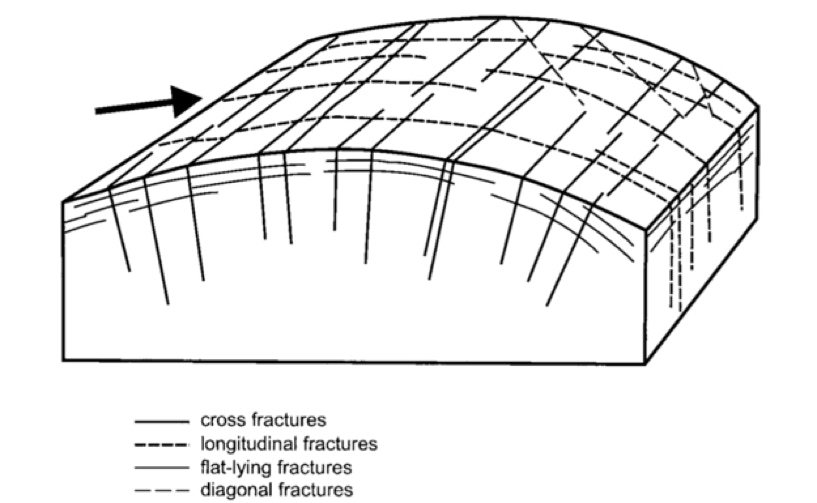
Figure 4.8. Scheme representing fractures in granite rocks (Migon, 2006, Granite Landscapes of the World, Oxford University Press).
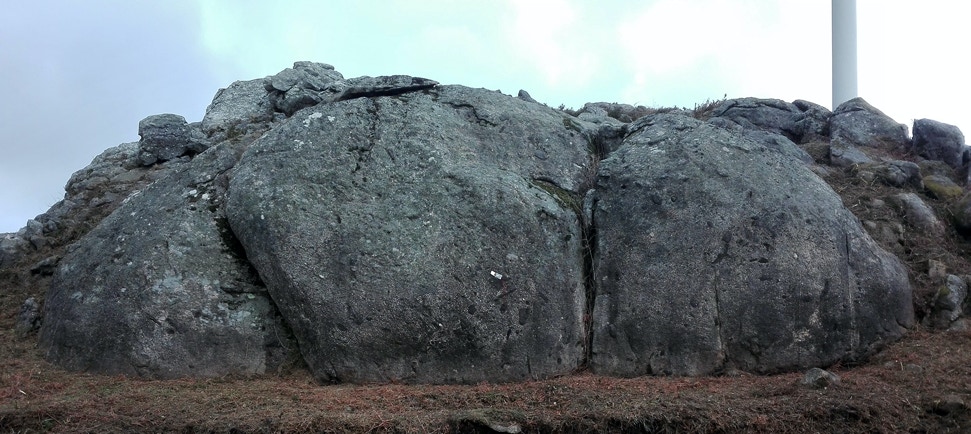
Figure 4.9. Fractured granite (Bouça de Frades facies) near Santa Luzia mountain top.
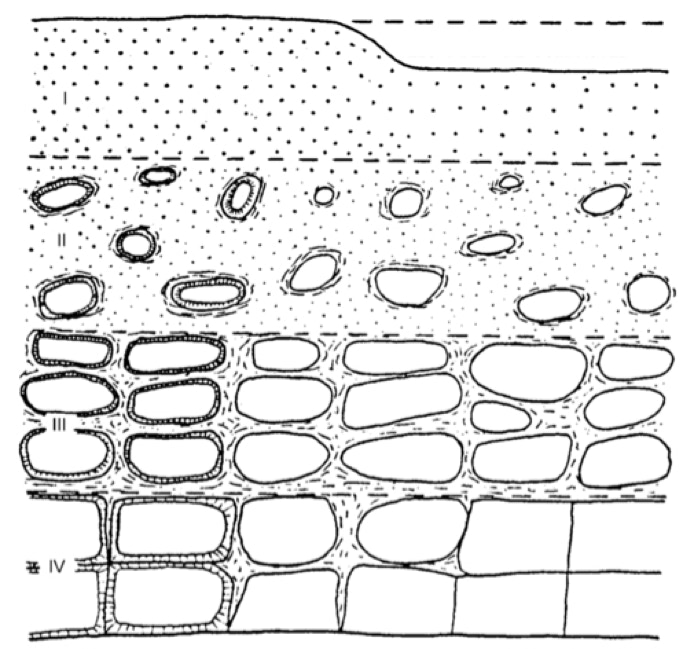
Figure 4.10. Scheme representing a typical profile of weathering in granite rocks (Ruxton & Berry, 1957, in Migon, 2006, Granite Landscapes of the World, Oxford University Press): I – saprolite (< or = 30% of clay minerals, prevalence of quartz and kaolinite); II – saprolite, rounded “corestones” representing between 10% and 50%; III – prevalence of rectangular “corestones” surrounded by a weathered matrix; IV – more than 90 % of solid rock with only small amounts of weathered material in fractures.
Depending on their size, granite landforms are usually classified into three major groups: mega-landforms (with at least 100 meters); meso-landforms (with dimension between 1 and 100 meters), and micro-landforms (usually inferior to 1 meter). Mega-landforms, such as inselberg or bornhardt, are not found in this LNM; however, it is possible to see meso-landforms such as blocks, tors and nubbins.
Rounded blocks or balls become exposed at the surface when the upper weathered material is eroded. These balls can remain in situ or be transported to another place. Granite balls continue to be weathered at the surface. In this LNM, granite blocks at the surface are only slightly rounded; it is more frequent to find blocks with irregular shapes associated with sub-horizontal fractures (Fig. 4.11).
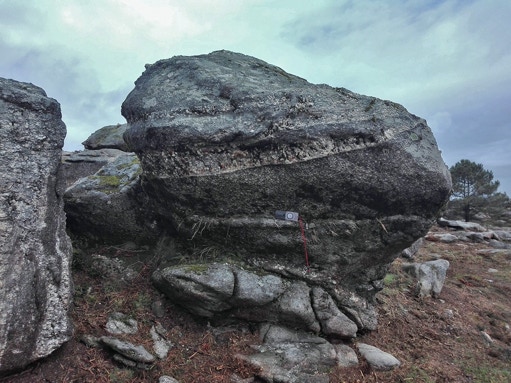

Figure 4.11. Slightly rounded granite blocks in this LNM.
Despite the occurrence of meso-landforms in the LNM, micro-landforms predominate, namely pias, tafoni and pseudobedding. They appear in the two main granite facies of the LNM, which might indicate that the chemical nature of these granites is more important than their texture when considering the origin of micro-landforms.
Pias are very common in the granitic landscape of the Iberian Peninsula. They are small closed depressions, usually circular, with centimetres or decimetres, which appear in flat or slightly leaning rocky surfaces (Fig. 4.12).
The formation of pias has been discussed for some time but it is consensual that their origin is related to chemical weathering. Some authors think that they may form at the surface when the accumulation of water in small cavities leads to the formation of pias through chemical and physical processes. Another hypothesis is that pias may have a complex endogenous origin related to the concentration of tension in specific points of the granite massif during its emplacement.
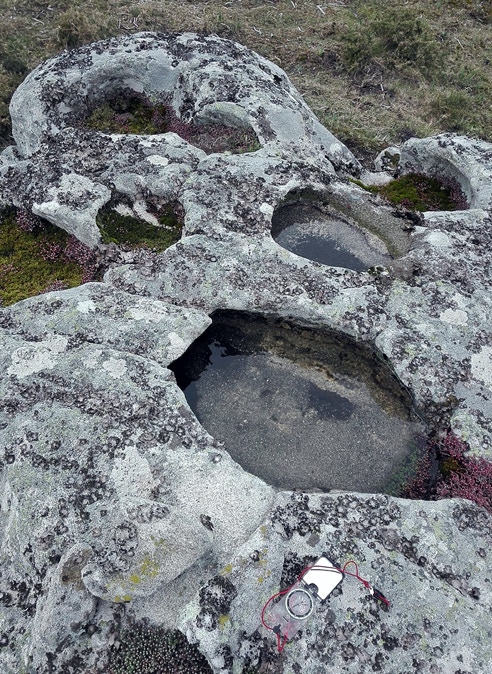
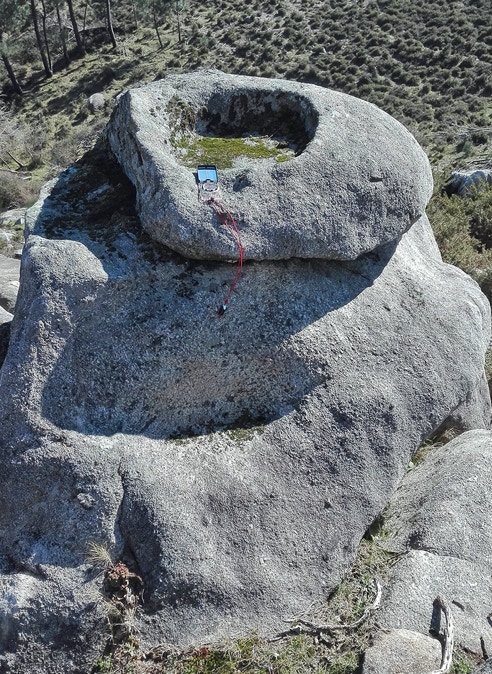
Figure 4.12. Pias in the surface of granite blocks in the LNM.
Tafoni (plural for tafone, an Italian word which means window) are honeycombed hollow forms existing in the walls and bottom surfaces of granite blocks (Fig. 4.13). Their occurrence and spatial distribution are somehow intriguing, with some (rare) blocks presenting tafoni structure existing side by side with others that do not have it, despite their chemical and structural composition being similar. Such as in the case of pias, the origin of tafoni is controversial: some authors advocate that they may be formed at the surface while others maintain that their formation began in depth in a process similar to that of pias.

Figure 4.13. Example of a block with tafoni in the LNM.
Pseudobedding refers to the development of fractures parallel to the topographic surface giving a stratified aspect (such as in sedimentary rocks) to granites (Fig. 4.14). This process is related to load relief when granites become nearer the surface. The fractures are usually centimetres or decimetres thick, and are a significant contribution to lessen the mechanical resistance of rocks and thus favouring superficial rock movements along slopes.

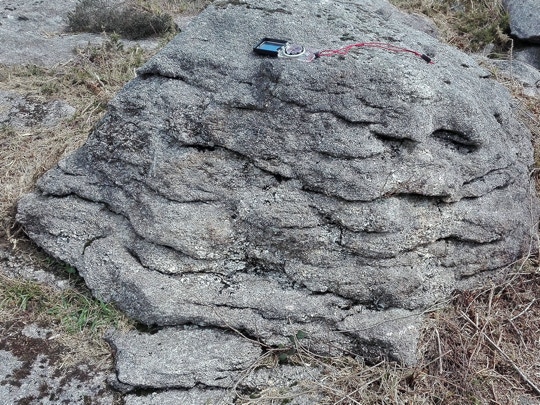
Figure 4.14. Examples of pseudobedding in this LNM.
In the LNM, it is possible to see some granite blocks where their upper part is more prominent than the base. These landforms, called pedestal blocks, are associated with the process of pseudobedding: they originate when weathering and erosion are stronger at the bottom of pseudobedded blocks.
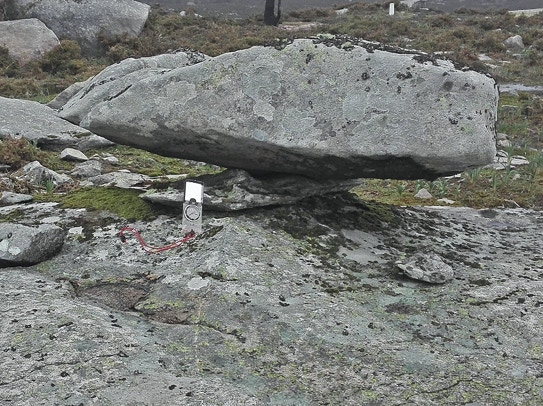
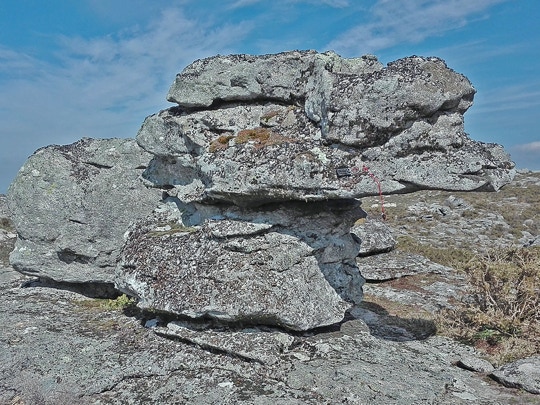
Figure 4.15. Pedestal blocks associated with pseudobedding in the LNM.





